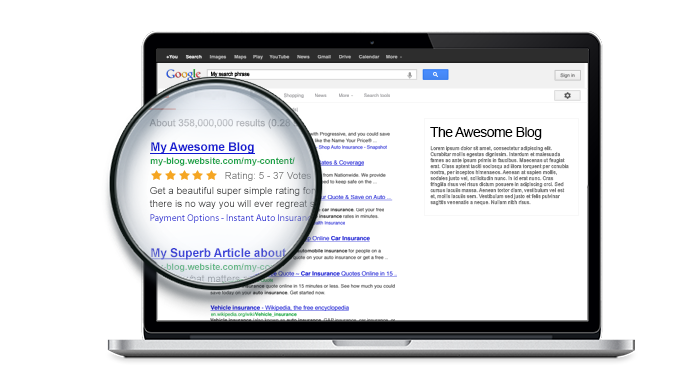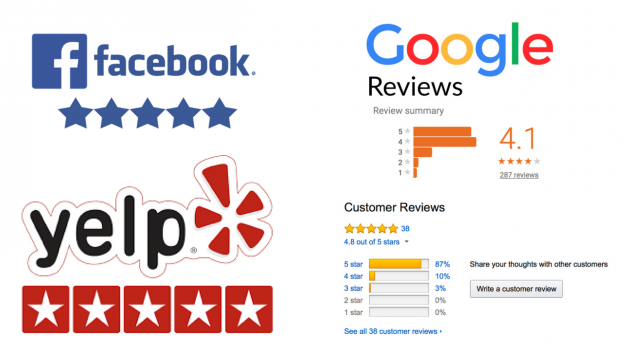The five-star ratings system is likely something you take for granted. It’s on Yelp, Google, and Amazon. And those are just the big guys. Your favorite recipe website might allow you to rate your favorite bites, while your favorite book review app (Goodreads, anyone?) prompts you to share your feelings about your latest read.
At RatingWidget, we’re clearly huge proponents of the five-star ratings system. In fact, adding ratings to your site can increase your SEO and give you the opportunity to connect with consumers.
Great ratings on their own function as free marketing for your business, while lackluster comments give you the chance to show that you care—turning the tides in your favor. While a low score might feel like a bummer, it can give you a platform to demonstrate impressive customer service, as well as make positive changes that impact your business long term.
The tried and true five-star rating system remains famous for its straightforward nature but some major companies rely on the more simplistic thumbs up or down method, instead.
Here is a bit of background information about the bygone YouTube and Netflix five star ratings system, and why they’re now on “Team Thumb”.
The Thumbs Upping Factor
You might not have noticed, but last year, Netflix made something of a splash by scrapping their star-rating system in favor of the black and white, thumbs up or down system. According to a piece by The Atlantic, the streaming giant views the star system as a way users show off to one another.
YouTube has been operating on a thumbs up basis for a while now, too. The online video sharing platform switched from a star ratings system to a thumbs up/down system way back in 2009. YouTube made the switch based on overwhelming data, stating that the five-star rating system yielded some predictable results. For example, the most common rating was five stars, while the second most common was one-star.
Anecdotally, you’ll probably see this a lot on review sites. Most people won’t share their opinion unless they loved or hated something. The middle points—well—the idea is, if you don’t feel strongly in either direction, it’s probably not going to be worth your time to share your thoughts.
The thumbs up model represents designing for people’s’ behavior—in other words, their binary ratings. You loved it, or you hated it. But with something like Netflix, where you’re rating movies and TV shows that model might not be your best bet—a granular (star) rating model can give audiences more nuance. You might check out a movie that got a three or four-star average but pass on a two.
But, the Netflix ratings weren’t as straightforward as you might think. Customers assumed that if a film had four stars next to the title, it wasn’t an average of all customer reviews.
That four-star designation referred to how Netflix’s algorithm assumed you were going to rate the movie. The newer thumbs up/down rating system now customizes recommendations based on how likely a match that film/show is based on previous ratings.
Five Star Rating Systems—Yelp, Google, Facebook, and Beyond
In contrast to the Netflix and YouTube rating systems, other digital giants rely on the five-star rating system to help them get more granular information.
Facebook, Yelp, and Google users can rate the businesses they visit. That three-star review might give other consumers the heads-up that a restaurant has a few great dishes, but bad service. Or that they liked a product overall but it was missing some key features.
That said, in some cases, like Uber drivers who must maintain a 4.6 average rating to keep their job, might not benefit from the system as much as Amazon shoppers seeking out a new digital camera. When it comes to picking between a star ratings system or a thumbs up/down rating system, it’s all about the context.
The SEO Benefits of Online Reviews
Search engines pay attention to a lot of different elements—the quality of your content, how user-friendly your website is, and so on. Search engines also reward sites with a review component built-in.
First of all, reviews provide search engines with fresh content—your readers do the work for you. Those customers talk with you and about you to other customers. After a while—typically about four weeks—Google’s search results will begin to include reviews from your site. Assuming your customers are pleased with your products or services, the five-star rating system can play a role in boosting your credibility.
Pro tip: Incorporate Rich-Snippets using schema markup on your website so that your customer reviews stand out on the search engine results page!

The benefit of including star ratings versus the thumb up/down system is that it gives customers a chance to share why they might have decided to provide you with a three or four-star rating.
Five Star Ratings is Where it’s At: Check Out RatingWidget to Get Your Site on the Map
We get the reasoning behind the move to thumbs up/down for the big content companies, sure. Netflix had a unique use for the star-based scoring system, anyway. And YouTube? Well, users are generally rating things like cat videos, lectures, and funny tidbits—things you probably either simply like or don’t.
A smaller business, like a restaurant or an eCommerce store, will benefit from giving users more freedom to customize their reviews. Sure, you’re limited to just five stars in most cases, but those three and four-star comments? That’s where you’re going to find the bulk of your opportunities for improvement.
RatingWidget is a WordPress plugin, Blogger gadget, Shopify app (and more!) that allows you to add five star ratings systems to your website. By implementing this tool, customers can rate their favorite products or share their feedback on the service they received in-house. We even have a thumbs up/down feature if you want to model your ratings system after the big guys!
You can have stunning ratings for your website in 5-min for free! Furthermore, we support rich-snippets out of the box when using our WordPress plugin or Shopify app.






Be the first to Comment